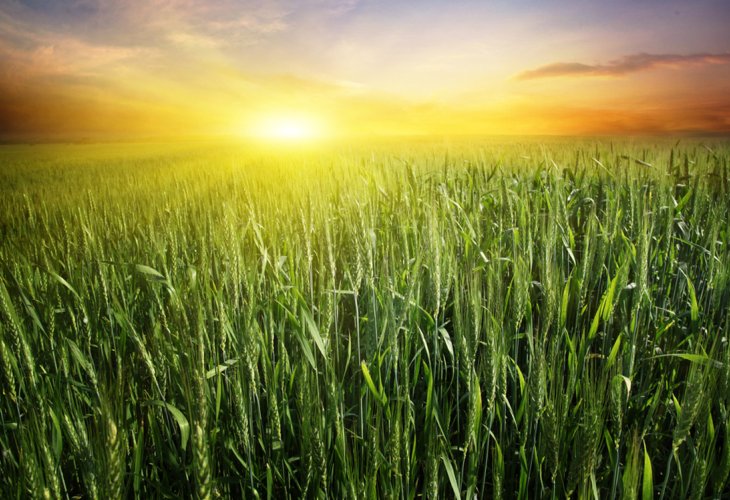The Halachic Guide for the Eve of Sabbatical Year 5775
Understanding the essence of the Sabbatical year, all halachot regarding planting fruit and non-fruit trees, and everything you wanted to know about Shmita but had no one to ask

First, a brief introduction to the Sabbatical year
We are on the eve of the Sabbatical year, may it come upon us for a blessing. Therefore, it is appropriate for everyone to study the laws of Shmita, which will inspire one to fulfill all the laws of the Sabbatical year properly. Through this merit, may we witness the coming of the righteous Messiah, Amen. Rabbi Ben Zion Abba Shaul of blessed memory, in the introduction to his book "Or L'Tzion Shviit," wrote that the virtue of Torah study and fulfillment of commandments in the seventh year is greater than in other years.
The "Kli Yakar" writes in Parshat Behar about the reason and foundation for the Shmita commandment: The purpose of this mitzvah is to instill in Israel the qualities of faith and trust in Hashem. There was concern that upon entering the land and engaging in agriculture according to natural patterns, when they would find success, they might forget Hashem and remove their trust in Him, thinking that their own strength and might brought them this prosperity, and that the world follows natural patterns. From this, they might come to think, Heaven forbid, that the land is theirs, that they are the owners and there is no other. Therefore, Hashem removed them completely from the natural pattern. For in six years, it is the way of nations to sow for two years and leave the land fallow for one, so as not to exhaust its strength. But Hashem said: 'Six years you shall sow your field, year after year, and I promise to increase its strength, that it will not be exhausted.'
And there is another miracle within a miracle: after sowing for six years, if in the sixth year the land's strength is not depleted, at the very least it should not gain additional strength. Yet Hashem said that, on the contrary, in the sixth year He will add so much strength that it says: "I will command My blessing for you in the sixth year, and it will yield produce for three years." Through all these wonders, "which I have placed in your hand, you will know that all the land is Mine." Through this, your eyes will be lifted to Hashem, as we found with the daily manna, so that their eyes would be lifted to Hashem always and they would trust in Him continuously.
With Hashem's help, we will provide detailed guidance regarding planting fruit trees, non-fruit trees, seedlings, etc.:
1. It is forbidden to plant fruit trees after the 15th of Av in the sixth year (this date has already occurred last Monday). The reason is due to appearances: if one plants fruit trees after this date, the seventh year will be counted as the first year for the calculation of Orlah years, and people might suspect that the planting was done during the Sabbatical year. If one transgressed and planted, they must uproot it. However, if one did not uproot it and the Orlah years have passed, the fruits are permitted for consumption, as explained in the Rambam (Chapter 3 of Shmita, Law 11).
2. The above prohibition against planting fruit trees applies even when done by a non-Jew. Therefore, if a non-Jew transgressed and planted the tree, one must uproot it to avoid suspicion.
3. One who wishes to plant non-fruit trees should ideally do so by the 14th of Elul in the year preceding Shmita, so that the rooting process, which takes fourteen days, will be completed before the Sabbatical year.
4. Ornamental seeds and flowers should be sown up to three days before Rosh Hashanah, to ensure they take root before Rosh Hashanah. However, when necessary, one may be lenient and plant them until Rosh Hashanah. When purchasing flowers from nurseries in small pots with soil clumps, it is permitted to transplant them with their soil until the eve of Rosh Hashanah.
5. One should advance before the Sabbatical year all work that can be done in the sixth year, so that it will not need to be done during Shmita, or to minimize the number of labors performed during the Sabbatical year. Similarly, at the end of the Sabbatical year, one should postpone all work that can be delayed until the eighth year, as explained in Chazon Ish (Shviit section 21, end of subsection 17).
6. One should ensure fertilization of the soil in the sixth year. It is possible to use combined fertilization called "slow release" which dissolves slowly in the soil, thus fertilizing the soil in a slow and controlled manner throughout the Sabbatical year (Book of Kedushat Ha'aretz Shviit, page 126).
7. During Shmita, it is forbidden to prune trees and shrubs, both fruit trees and non-fruit trees. Therefore, one should ensure maximum pruning of trees and shrubs before the Sabbatical year, so that there will be no need to prune during Shmita itself.
8. It is forbidden to support trees during the Sabbatical year. Therefore, one should prepare supports before the Sabbatical year, and the same applies to whitewashing trunks and preparing irrigation basins.
9. The book Mishpetei Eretz writes in the name of the Chazon Ish – plowing between vines should be done before the Sabbatical year, and during Shmita itself, it is only permitted to hoe with a hoe when necessary, to prevent the tree from dying.

